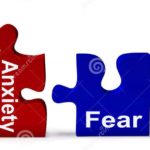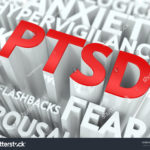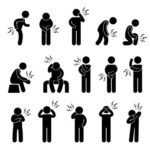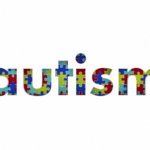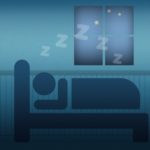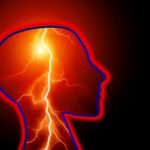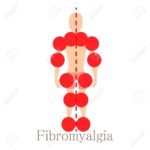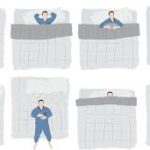Therapeutic applications of Neurofeedback

Neurofeedback for Peak Performance
Neurofeedback or neurotherapy is a cutting-edge technology that helps calm the mind and maintain focus. It contributes to controlling emotions such as anger and frustration, as well as reducing anxiety or stress before or during a presentation. Neurofeedback has been shown to improve balance, as well as synchronization and fine motor control, and is used in a variety of sports and artistic expressions such as music, theater and dance.
The general objective of neurofeedback training is towards a more efficient brain and eliminate inefficient and wasteful mental habits and strengthen our skills.
Neurofeedback for Attention Deficit
The essential characteristic of attention deficit hyperactivity disorder is a persistent pattern of inattention and / or hyperactivity-impulsivity. Some symptoms of hyperactivity-impulsivity or inattention that cause problems may have appeared before 7 years of age. Although most people with attention deficit have symptoms of both inattention and hyperactivity-impulsivity, in some they predominate one or the other of these patterns.
The American Academy of Pediatrics places Neurofeedback as the best intervention in children with Attention Deficit, both inattentive type and hyperactive type, with the benefits of being a non-invasive therapy and without side effects.
Neurofeedback for Encopresis

Encopresis is characterized by the repeated emission of faeces in inappropriate places such as clothing or soil. In most cases this issue may be involuntary, but sometimes it is intentional and occurs at least once a month for at least three months. It must be ruled out that the behavior is due to physiological effects and can occur with or without constipation.
Neurofeedback for Anxiety
Anxiety is characterized by excessive worry, restlessness, difficulty concentrating, irritability and sleep disturbances for a period exceeding six months. Although people with anxiety disorder do not always recognize that their concerns are excessive or uncontrolled, they manifest an obvious difficulty in controlling them, causing subjective discomfort and social deterioration. The intensity, duration or frequency of the appearance of anxiety and concerns are clearly disproportionate to the possible consequences that may result from the feared situation or event. The cause of anxiety and its different disorders is due to different factors, such as: genetic predisposition, brain chemistry and environmental stressors.

Neurofeedback for Fibromyalgia

Fibromyalgia is a syndrome that causes suffering and loss of quality of life to the sufferer, without a demonstrable organic alteration. Fibromyalgia generates a wide variety of symptoms, with generalized pain being the most characteristic. It affects between 2% and 4% of the population and has more prevalence in women than in men. However, pain is not the only symptom that people with fibromyalgia suffer, there are other characteristic symptoms such as fatigue or fatigue. In the same way, the person can suffer changes in mood, sleep problems and anxiety.
Neurofeedback for Autism
Neurofeedback has proved useful as a complement to the medical treatments of autism. And is that different research has shown that the symptoms related to autism are the result of brain dysfunction in multiple brain regions, so the techniques of conditioning or strengthening the activity of brain waves are used to promote emotional stability and the physical functioning of patients within the autistic spectrum by balancing connectivity deficits in the brain.
Autism is part of the generalized developmental disorder and is characterized by lack of eye contact, facial expression, poor social interaction, lack of communication and restricted repetitive behaviors.
By balancing connectivity deficits in the brain, Neurofeedback is a technique used worldwide for the autistic spectrum.
With DNT Neurofeedback we personalize training to enhance neurodiversity, helping individuals with ASD reach their potential by improving family and peer relationships.
Our neurotherapy works directly with preconscious brain rhythms, which bypasses communication and motor difficulties common to individuals on the spectrum. Such difficulties often limit other therapies, and with DNT Neurofeedback we enable a child to be more available for play, occupational, and social skill therapies.
Neurofeedback for Stress

Neurofeedback is a treatment that helps the person to increase the resilience to stressful stimuli characteristic of stress such as the appearance of anxiety, detachment or absence of reality, or the decrease in emotional reactivity.
In these cases, Neurofeedback helps the person to reduce anxiety and improve the response capacity, thus managing to eliminate the negative symptoms produced by stress. This is achieved, because changes in brain activation are introduced. Likewise, Neurofeedback helps stress to be handled properly and assertively.
Neurofeedback for Depression
But it is not true. Everyone lives in a growing world, surrounded by positive energy and freedom — but when depressed we lose our way and no longer feel the positivity and growth, we no longer synchronize with friends and family, or anyone around us.
Default Network Training is the solution.
With simple and effective brain training, personalized and authentic, we restore connection by showing our brain how to be happy and free.
Training usually takes a few months, depending on severity and onset.
The end result is a positive and freer you. Enjoy life, friends and family once again.

Neurofeedback for Post Traumatic Stress
The main characteristic of post-traumatic stress disorder is the appearance of symptoms of hypervigilance that follows exposure to a stressful and traumatic event, where the person was involved in situations that represent a real danger to their life or physical integrity, or being witnesses of situations where there is a threat to the lives of other people. The person’s response to this situation includes fear, hopelessness, intense horrors, nightmares, sleep disturbances, feelings of irrational anger and anxiety; There may also be symptoms of persistent re-experimentation of the traumatic event. All these symptoms interfere significantly in the life of the person, causing great discomfort and social deterioration.
Neurofeedback for the Migraine - Headaches
The most common theory of migraine considers that the cause is a disorder of the central nervous system, causing neurological and biochemical alterations. The headache can be located in a certain area of the head, which can vary according to each person, and in Sometimes the pain is accompanied by a pronounced sensitivity to light and sound, as well as nausea and vomiting. Migraines are usually of gradual onset, progressively more painful and then undergo a gradual resolution, they may even limit the person in their daily activities.
Neurofeedback for different types of chronic pain

One of the best alternatives for the treatment of pain is Neurofeedback, since it is a safe, non-invasive and effective method. The aim of the treatment is to stabilize the central nervous system, increasing the functionality of the brain and its capacity for self-regulation, thus achieving mental and physical calm, reducing stress, improving mood, increasing the pain threshold, so that the pain is no longer perceived as strong.
Neurofeedback for Enuresis
To be understood as a behavioral disorder the child must have reached an age at which continence is expected, in children around 5 years of age or, in children with developmental delays, a mental age of at least 5 years. Urinary incontinence is not due exclusively to the direct physiological effects of a substance, nor to a medical illness.
We can find three types:
Enuresis only at night: It occurs only during night sleep.
-Enuresis only diurnal: It occurs while awake.
-Night and daytime enuresis: It occurs both at night and day, since it is a combination of the two previous subtypes.

Neurofeedback for Sleep Disorders

Insomnia, or dysregulation in the sleep cycle, is a sleep disorder that has a variety of symptoms. People with insomnia may have difficulty falling asleep, often wake up at night, or have difficulty falling asleep again. The sleep dysregulation cycle can also cause a person to wake up too early, feel tired on waking, or experience fatigue during the day.
A poorly regulated sleep cycle is caused by a wide variety of factors, including emotional or physical stress, life adjustments, illnesses, and physical problems. It can cause depression or anxiety, chronic stress, daytime fatigue, irritability and difficulty concentrating.


